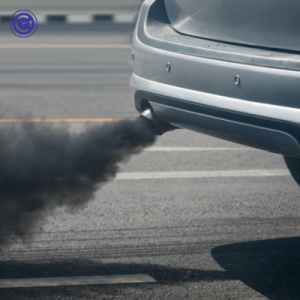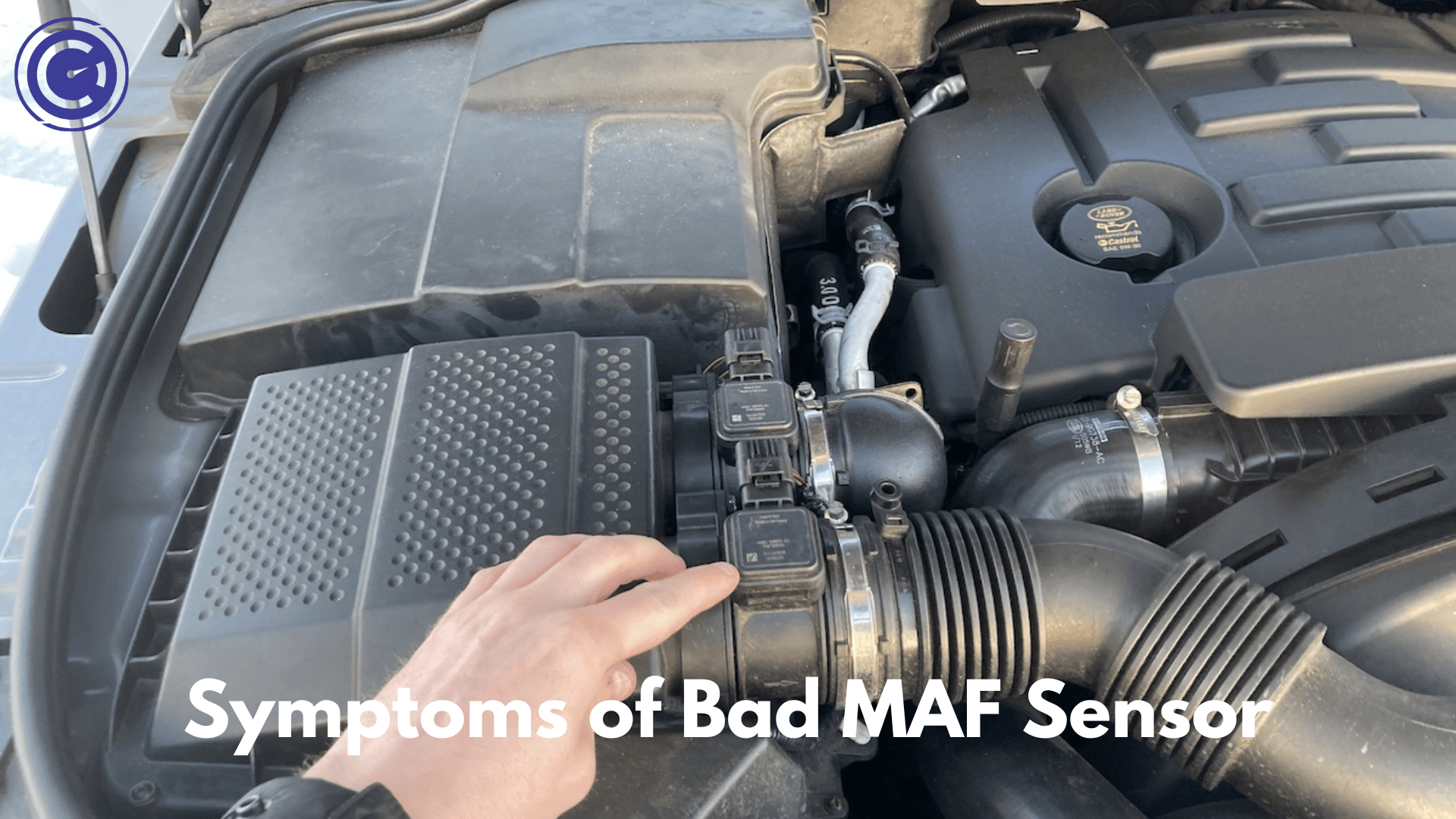For car owners, understanding the various components that keep your vehicle running smoothly is essential. One such component is the Mass Air Flow (MAF) sensor, which plays a critical role in determining the air-fuel mix in your engine. A malfunctioning MAF sensor can lead to various engine performance issues. This blog aims to educate car owners about the symptoms, causes, and solutions for a bad MAF sensor.
Table of Contents
Introduction: The Role of the MAF Sensor
Understanding the components of your vehicle’s engine is key to maintaining its health and performance. One such component, often overlooked but crucial, is the Mass Air Flow (MAF) sensor. This sensor plays a vital role in the engine’s functioning by ensuring the correct mixture of air and fuel for combustion. Let’s dive into the role of the MAF sensor and its importance in your vehicle’s engine system.
What is an MAF Sensor?

The Mass Air Flow sensor is a key part of the electronic fuel injection system in modern vehicles. It measures the volume and density of air entering the engine. This information is crucial for the engine’s control unit (ECU) to balance and deliver the correct fuel quantity for efficient combustion.
How Does the MAF Sensor Work?
The MAF sensor is typically located in the air intake tract, often between the air filter and the throttle body. It operates by either heating a wire or a film exposed to the incoming air or by using a vane meter. Here’s how it works:
- Hot Wire MAF: This type of sensor uses a wire heated to a specific temperature. As air flows over the wire, it cools down. The sensor measures how much current is needed to keep the wire at the constant temperature, which correlates to the air mass flow.
- Vane Meter MAF: In this type, a flap or vane is pushed by the incoming air. The movement of this vane is used to measure the air flow.
Importance of the MAF Sensor
- Optimal Air-Fuel Mixture: The MAF sensor ensures that the ECU gets accurate information about the air intake, which is crucial for maintaining the ideal air-to-fuel ratio for combustion.
- Engine Efficiency and Performance: Correct air-fuel mixture improves engine efficiency, power output, and responsiveness.
- Emission Control: Proper combustion significantly reduces harmful emissions, as the fuel burns more completely.
- Fuel Economy: Accurate air measurement by the MAF sensor helps in optimizing fuel consumption, leading to better fuel economy.
Symptoms of a Bad MAF Sensor
The Mass Air Flow (MAF) sensor is a critical component in modern vehicles, playing a key role in engine performance and efficiency. When the MAF sensor starts to fail, it can lead to various issues with your vehicle’s engine due to inaccurate readings of air flow. Recognizing the symptoms of a bad MAF sensor can help you address the problem before it leads to more serious engine issues. Here are some common symptoms to watch out for:
Engine Stalling

A faulty MAF sensor may cause the engine to stall or hesitate, particularly during idle or low-speed driving. This occurs because the sensor is not accurately measuring the air entering the engine, leading to an improper fuel-air mix.
Rough Idle

When the MAF sensor malfunctions, it can cause the engine to idle roughly. You may notice excessive vibration or shaking when the vehicle is at a stop. This is often due to an incorrect air-fuel ratio caused by the sensor’s inaccurate readings.
Hesitation and Jerking During Acceleration
If your vehicle hesitates or jerks during acceleration, it could be a sign of a bad MAF sensor. The sensor’s inability to correctly measure air flow can result in delayed engine response and uneven power delivery during acceleration.
Loss of Power

A noticeable decrease in engine power and acceleration can be a symptom of MAF sensor issues. The engine may feel weaker than usual, particularly under load, due to the incorrect air-fuel mixture.
Black Exhaust Smoke

Excessive black smoke from the exhaust is often an indication of a rich fuel-air mixture, which can be caused by a faulty MAF sensor. The sensor may inaccurately report less air entering the engine, leading the system to add too much fuel.
Check Engine Light

An illuminated check engine light can be triggered by various issues, including a malfunctioning MAF sensor. Modern vehicles can store diagnostic trouble codes that a mechanic can read to confirm if the MAF sensor is the problem.
Reduced Fuel Efficiency

If your vehicle’s fuel efficiency suddenly decreases, it could be due to a bad MAF sensor. Incorrect air flow readings can cause the engine to use more fuel than necessary, reducing overall fuel economy.
Potential Causes of a Bad Mass Air Flow Sensor
A well-functioning Mass Air Flow (MAF) sensor is crucial for the optimal performance of your vehicle’s engine. However, several factors can lead to the malfunctioning of a MAF sensor. Understanding these potential causes is key to preventing and addressing issues that may arise with the sensor. Here are some common reasons why a MAF sensor might go bad:
Contamination
- Dirt and Debris: Over time, dirt, dust, and other airborne contaminants can accumulate on the MAF sensor, particularly the sensor wire or film. This buildup can interfere with the sensor’s ability to accurately measure the air flow.
- Oil Particles: Oil particles from air filters, especially if over-oiled, can coat the sensor and hinder its performance.
Sensor Failure
- Wear and Tear: Like any electronic component, a MAF sensor can wear out over time. Constant exposure to airflow, temperature fluctuations, and vibrations can degrade the sensor’s components.
- Internal Damage: Physical damage, often due to cleaning or handling, can impair the sensor’s functionality. The delicate parts of the sensor are susceptible to damage if not handled carefully.
Air Leaks
- Intake System Leaks: Leaks in the air intake system, such as in the tubing or gaskets, can lead to inaccurate readings by the MAF sensor. These leaks can allow excess air into the system, disrupting the air-fuel ratio.
Electrical Issues
- Faulty Wiring or Connections: Problems with the sensor’s wiring or electrical connections can lead to malfunctions. Loose connections, corroded wires, or damaged harnesses can interrupt the sensor’s signal to the ECU (Engine Control Unit).
- Short Circuits: A short circuit in the sensor’s circuit board can result in its failure.
Environmental Factors
- Extreme Temperatures: Operating in extreme cold or heat conditions can affect the sensor’s functionality.
- Humidity and Moisture: High levels of humidity or moisture ingress can lead to sensor malfunctions.
Poor Maintenance
- Lack of Regular Cleaning: Failing to clean the MAF sensor regularly can lead to a buildup of contaminants, affecting its accuracy.
- Using Inappropriate Cleaners: Using harsh or inappropriate cleaning agents can damage the sensor.
Incorrect Installation
- Improper Fitting: If the MAF sensor is not properly installed, it can lead to issues. This includes incorrect positioning or not being securely fastened.
Diagnosing a Bad Mass Air Flow Sensor

Diagnosing a malfunctioning Mass Air Flow (MAF) sensor is crucial for maintaining your vehicle’s engine performance and efficiency. A faulty MAF sensor can lead to various issues, including poor fuel economy, engine stalling, and rough idling. Here’s a guide to help you diagnose a bad MAF sensor effectively:
Visual Inspection

- Check for Physical Damage: Start by visually inspecting the MAF sensor for any signs of physical damage, contamination, or debris accumulation.
- Inspect Wiring and Connectors: Look for any loose, corroded, or damaged wiring and connectors that could affect the sensor’s operation.
Cleaning the Sensor
- Attempt Cleaning: Sometimes, cleaning the MAF sensor can resolve issues, especially if the problem is due to dirt or debris buildup. Use a specialized MAF sensor cleaner and follow the manufacturer’s instructions carefully to avoid damaging the sensor.
Data Analysis
- Use Diagnostic Tools: Modern vehicles equipped with On-Board Diagnostics (OBD-II) systems can be connected to a diagnostic scanner. This tool can retrieve trouble codes that can indicate issues with the MAF sensor.
- Monitor Live Data: Some diagnostic tools allow you to monitor live data from the MAF sensor while the engine is running. Compare the readings to manufacturer specifications to see if the sensor is functioning correctly.
Airflow Measurement
- Measure Airflow: Using specialized equipment, measure the actual airflow into the engine and compare it to the MAF sensor’s readings. Discrepancies can indicate a problem with the sensor.
Professional Diagnosis
- Consult a Mechanic: If you’re unable to diagnose the issue using the above methods, or if you prefer a professional assessment, take your vehicle to a qualified mechanic. They have specialized tools and expertise to accurately diagnose MAF sensor issues.
Symptoms Check
- Correlate Symptoms: Match the symptoms your vehicle is exhibiting with common signs of a bad MAF sensor. If symptoms align, it further indicates that the MAF sensor could be the culprit.
Solutions and Recommendations
Once you have diagnosed a bad Mass Air Flow (MAF) sensor in your vehicle, it’s crucial to take the appropriate steps to resolve the issue. A malfunctioning MAF sensor can significantly affect your vehicle’s performance and fuel efficiency. Here are some solutions and recommendations for dealing with a bad MAF sensor:
Cleaning the MAF Sensor
- Gentle Cleaning: Often, a MAF sensor’s problems are due to dirt or debris buildup. Using a specialized MAF sensor cleaner, gently clean the sensor. Avoid touching the sensor’s delicate parts directly, as they can be easily damaged.
- Follow Manufacturer Guidelines: Refer to your vehicle’s manual for specific instructions on cleaning the MAF sensor.
Replacing the MAF Sensor
- Consider Replacement: If cleaning doesn’t resolve the issue, or if the sensor is damaged, replacement may be necessary.
- Quality Parts: Use high-quality, OEM (Original Equipment Manufacturer) or equivalent parts for replacement to ensure compatibility and reliability.
- Proper Installation: Ensure that the new sensor is correctly installed. Improper installation can lead to further issues.
Addressing Underlying Issues
- Check the Air Intake System: Inspect the air intake system for leaks or damage that could affect the MAF sensor’s readings.
- Inspect Electrical Connections: Ensure all electrical connections to the MAF sensor are secure and in good condition. Repair or replace any damaged wiring.
Regular Maintenance
- Air Filter Maintenance: Regularly check and replace the air filter. A dirty air filter can lead to a contaminated MAF sensor.
- Avoid Contaminants: Be cautious with substances like oil or cleaning fluids that can contaminate the MAF sensor. Follow air filter oiling instructions carefully to prevent overspray.
Professional Assistance
- Seek Expert Advice: If you’re unsure about diagnosing or fixing the problem yourself, seek help from a professional mechanic. They can provide an accurate diagnosis and ensure that repairs are done correctly.
- Diagnostic Tools: A mechanic can use advanced diagnostic tools to confirm the issue and check for any related problems.
Conclusion
A bad MAF sensor can significantly impact your vehicle’s performance and efficiency. Recognizing the symptoms early and understanding the potential causes are crucial steps in addressing this issue. Whether it’s through cleaning, replacement, or professional diagnosis, proper attention to a malfunctioning MAF sensor is key to maintaining your vehicle’s health.

